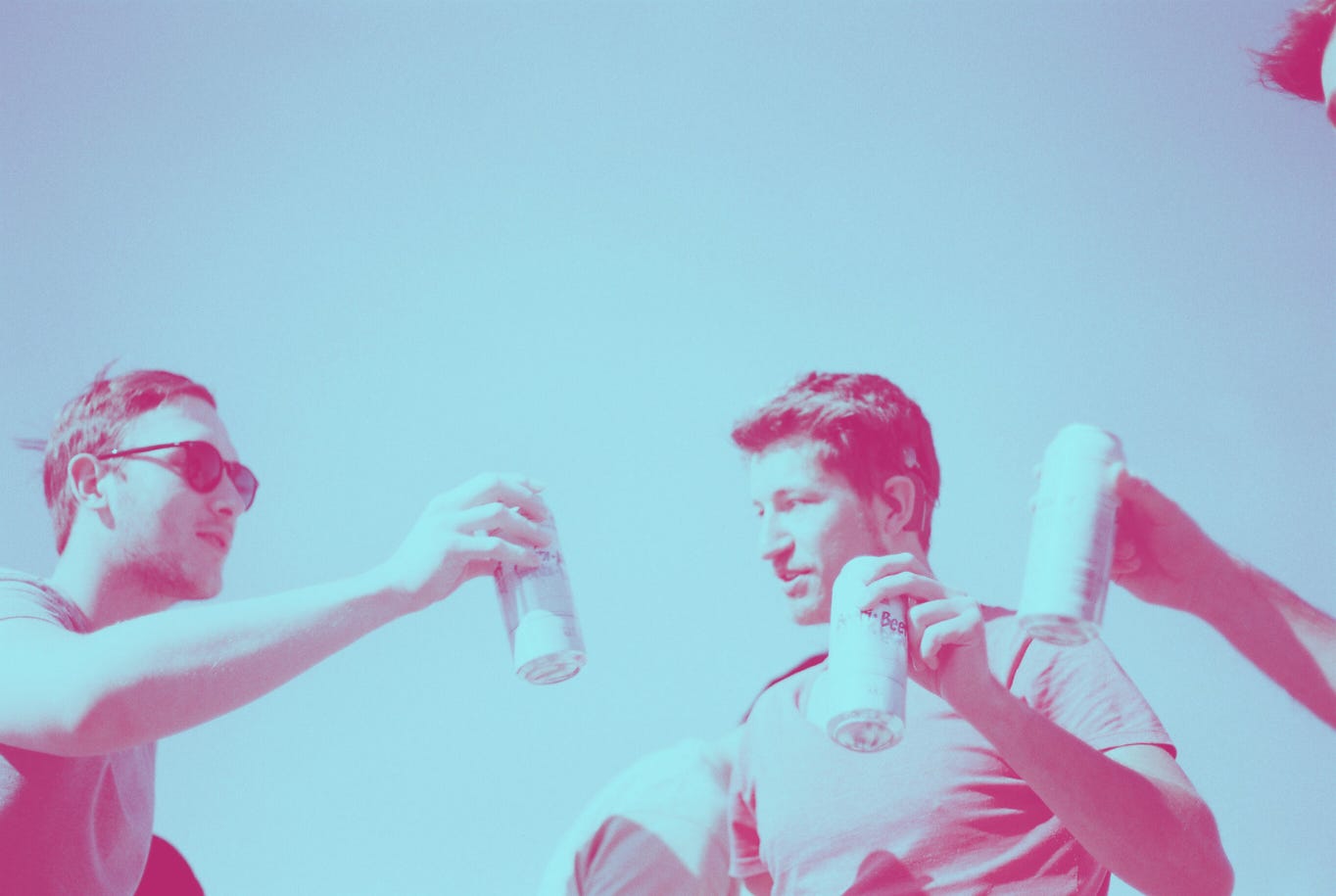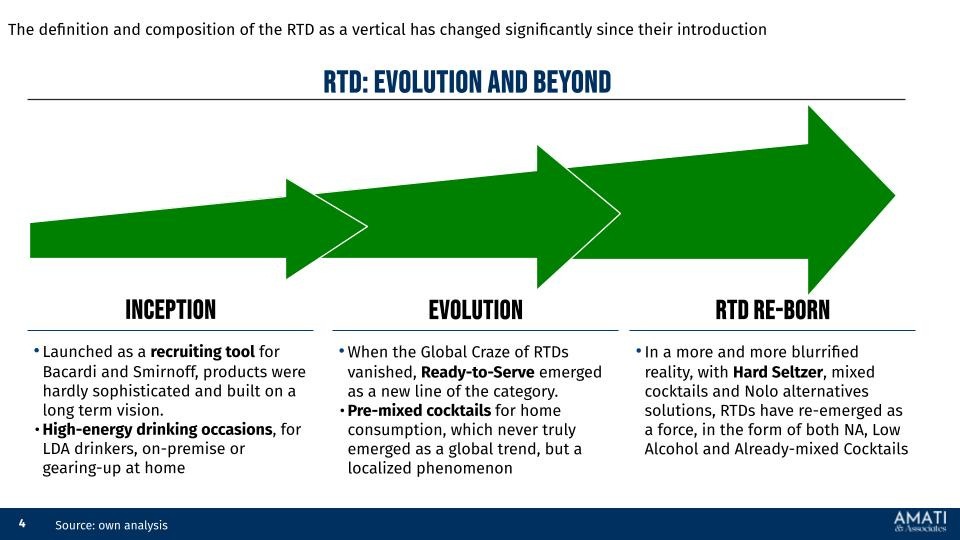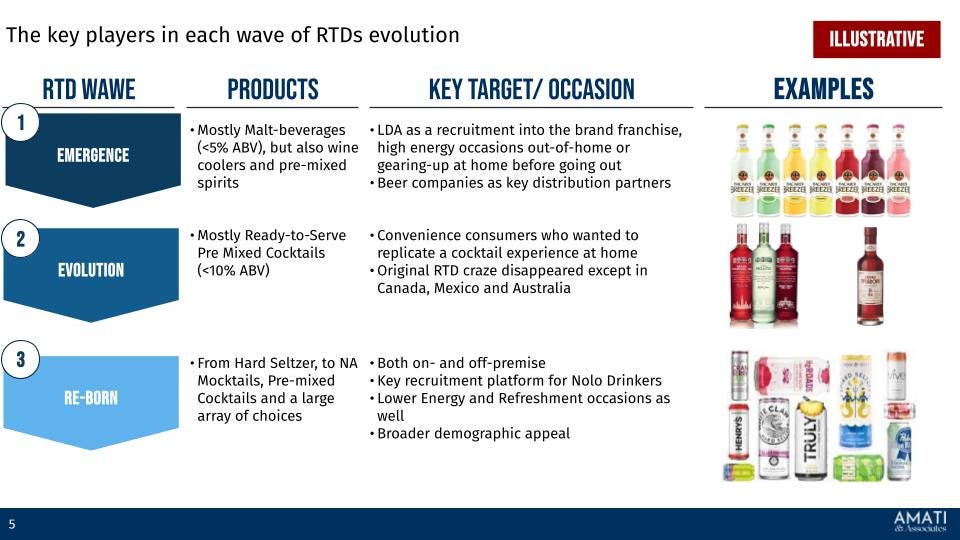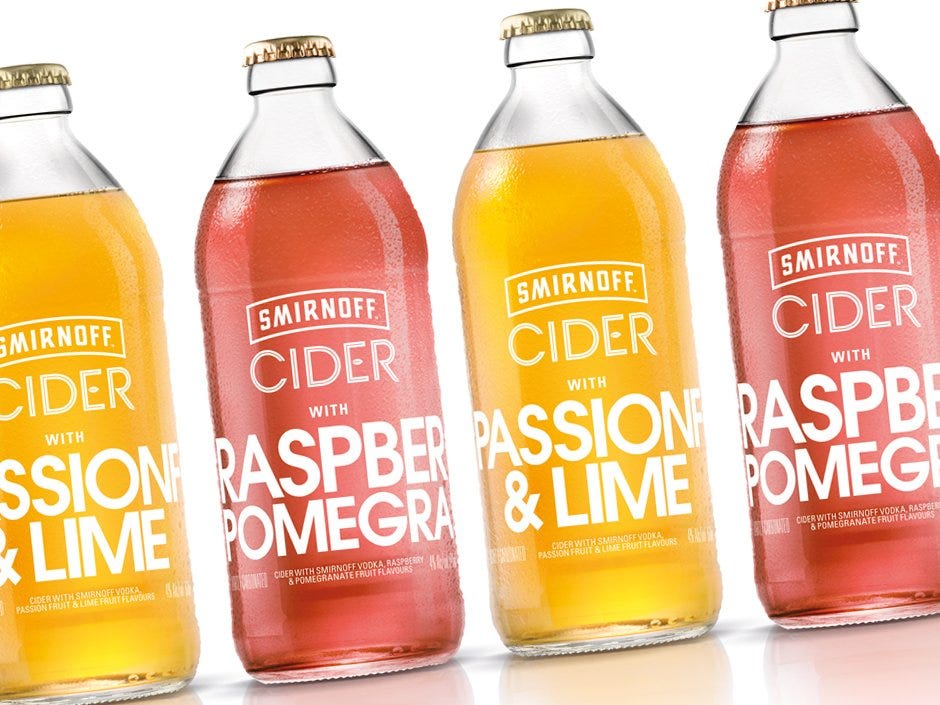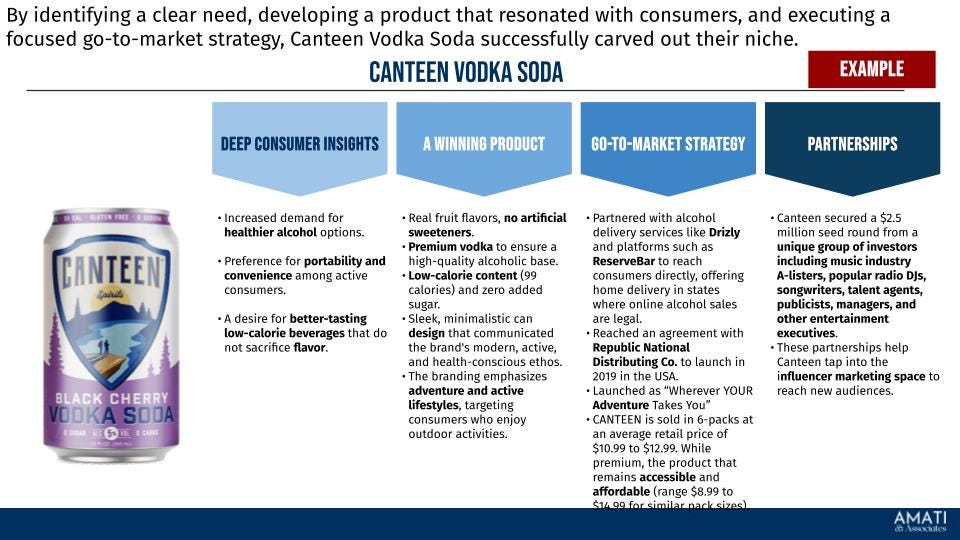The Essential Guide to Launching a Winning RTD Beverage Brand
From Mixology to Shelfology: How to Shake Up the RTD Market with Sweat, Blood and Fear of Failure
Introduction
The Ready-to-Drink beverage market is growing at an unprecedented rate, driven by consumers’ desire for convenience and healthier alternatives. Once dominated by simple wine coolers and malt beverages, the RTD category has evolved dramatically to include Hard Seltzers, pre-mixed cocktails, and Nolo (no/low alcohol) beverages. This shift reflects changing consumer preferences for more premium, flavorful, and portable options that align with busy, health-conscious lifestyles.
However, successfully launching an RTD product in today’s competitive environment requires a well-thought-out strategy grounded in deep market insights and strong brand positioning. In this article, we will outline the critical steps involved in taking an RTD product from concept to market, ensuring it resonates with consumers and stands out in a crowded space.
1. Understanding the RTD Evolution
RTD products first gained popularity in the 1980s and 1990s, offering a convenient alternative to traditional mixed drinks through pre-packaged wine coolers and malt beverages. However, the category's growth stagnated as consumer preferences shifted toward fresher and more sophisticated options. RTDs largely disappeared in many markets, except for strongholds like Canada, Mexico, and Australia.
In recent years, RTDs have re-emerged, fueled by the success of Hard Seltzers and pre-mixed cocktails. Brands like White Claw and Truly introduced healthier, low-calorie alternatives to sugary, high-alcohol drinks. At the same time, the Nolo (No and Low Alcohol) movement created space for a broader range of offerings, including mocktails and non-alcoholic spirits. These new RTDs appeal to consumers looking for moderation without sacrificing flavor.
Today’s RTD market is no longer limited to one demographic. The appeal extends across diverse groups—young adults seeking high-energy social experiences to older consumers interested in health-conscious, low-alcohol options for more casual settings. The future of RTDs lies in continuous innovation to meet consumers' evolving tastes, who seek premium-quality drinks that balance convenience with sophistication.
2. Market Diagnostic and Consumer Insights
Conducting a thorough market diagnostic is critical before launching an RTD product. This involves understanding consumer behavior, the competitive landscape, and distribution channels to identify gaps and opportunities.
Recent consumer trends indicate a growing preference for healthier options that do not compromise on taste. Portability and convenience remain high priorities, especially among younger consumers with active lifestyles. Products that align with these values, such as low-calorie, sugar-free beverages, are increasingly favored.
For example, Canteen Vodka Soda capitalized on these trends by offering a low-calorie, sugar-free product with natural fruit flavors and no artificial sweeteners. Its sleek, minimalistic design communicates the brand's modern, active, and health-conscious ethos, resonating with consumers who enjoy outdoor activities.
Collecting consumer data through surveys, focus groups, and market research can help refine product development and ensure that your RTD aligns with your target market's desires. This process will also reveal valuable insights about pricing expectations, flavor preferences, and branding perceptions, which are crucial in shaping a product that can succeed in a competitive marketplace.
3. Product Development and Differentiation
With consumer insights in hand, the next step is product development, which should be centered on creating a beverage that offers clear differentiation from competitors. A successful RTD must provide something unique through taste, ingredients, packaging, or overall brand identity.
Start by focusing on high-quality ingredients. RTD consumers, particularly those interested in premium products, seek beverages made with natural fruit flavors, no artificial sweeteners, and low-calorie content. Offering these attributes can immediately set your product apart from lower-quality, sugary alternatives.
Beyond ingredients, product packaging plays a pivotal role in differentiation. Your RTD should be designed to capture attention on retail shelves and convey the brand’s message. Canteen Vodka Soda, for example, aligned its design with a sleek, minimalistic aesthetic emphasizing health, adventure, and outdoor living. This resonated with active, health-conscious consumers looking for a lifestyle product, not just a drink.
Finally, focus on the overall brand positioning. Successful RTDs often tie their product to a specific lifestyle or social experience, such as casual gatherings, outdoor adventures, or health-focused activities. Differentiation can also come from premium positioning, offering innovative flavors, or tapping into niche trends like sustainable sourcing or wellness-oriented ingredients.
4. Go-to-Market Strategy
A well-executed go-to-market strategy ensures that your RTD product reaches the right consumers and generates buzz. Start by selecting the appropriate distribution channels. This often means leveraging both traditional retail outlets and digital platforms for RTDs. Partnering with alcohol delivery services like Drizly and platforms such as ReserveBar can expand your reach, particularly in markets where online alcohol sales are growing.
Next, develop a marketing strategy that resonates with your target audience. Storytelling is critical here. Consumers are more likely to engage with a brand that aligns with their values, such as health, sustainability, or adventure. Whether your brand emphasizes a healthy, active lifestyle or premium indulgence, ensure your messaging is clear and consistent across all touchpoints—from social media to product packaging.
Influencer marketing and partnerships are also valuable tools in driving engagement and visibility. Canteen Vodka Soda successfully used influencer partnerships to tap into the health-conscious, outdoor-focused demographic, establishing strong brand recognition quickly. Additionally, securing partnerships with major distributors like Republic National Distributing Co. enabled them to scale efficiently.
Pricing is another important consideration. Your RTD should be priced competitively to appeal to your target market, but it should also reflect the quality and uniqueness of your product. Premium RTDs, for instance, can command higher prices if they deliver on taste and quality while maintaining accessibility.
5. Execution and Launch Management
Launching an RTD product requires meticulous planning and flawless execution. Start with pre-launch activities, including supply chain management, R&D, and marketing preparation. Align your teams across production, distribution, and marketing to ensure everything runs smoothly from manufacturing to shelf placement.
Develop a strong brand identity that resonates with your target audience. This involves refining your brand’s messaging, packaging, and promotional materials to create a cohesive look and feel. A well-executed brand can significantly affect how consumers perceive your RTD and whether it stands out in a competitive marketplace.
Post-launch, focus on data-driven optimization. A/B testing different flavors, packaging designs, and promotional offers can help you fine-tune your product. Collect consumer feedback in real time, using it to make necessary adjustments to improve the product experience. For instance, successful brands continuously refine their marketing and packaging based on consumer behavior and sales trends.
In addition to traditional marketing efforts, growth hacking techniques can improve market penetration. Engaging with customers through social media, leveraging user-generated content, and incentivizing referrals can help build a loyal customer base and increase brand awareness.
Finally, post-launch follow-up should include consistent monitoring of your supply chain, marketing efforts, and sales performance. Review performance data regularly to ensure your product is meeting targets and make adjustments as needed to maintain momentum.
6. Long-Term Growth and Innovation
Long-term growth in the RTD market is driven by continuous innovation and adaptability. Trend scouting is essential to staying ahead of consumer preferences. Brands must adapt and iterate to remain relevant as new trends emerge—whether in flavor profiles, wellness ingredients, or packaging innovations.
Investing in R&D is critical to driving this innovation. Your brand can remain at the forefront of the market by continually exploring new flavors, product formats, and packaging solutions. For example, functional beverages and Nolo products are experiencing rapid growth as consumers seek alternatives catering to health and wellness trends.
Acquisitions and partnerships can also be an effective growth strategy. Beverage companies that have successfully identified and acquired emerging craft brands have been able to expand their portfolios and tap into new market segments. For instance, larger companies acquiring smaller RTD brands have benefited from their agility and niche consumer appeal.
By maintaining a forward-thinking approach, brands can ensure sustained growth in the ever-evolving RTD market.
Conclusion
Launching a successful RTD product requires a comprehensive strategy that spans market research, consumer-centric product development, and effective go-to-market execution. By understanding consumer preferences, creating a unique and high-quality product, and leveraging traditional and digital distribution channels, your brand can carve out its niche in this competitive space.
Adaptability is key. The RTD market is dynamic, with consumer preferences constantly evolving. Brands that remain agile
continue innovating, and invest in long-term growth strategies will be best positioned for success.
By applying the steps outlined in this article, you can ensure your RTD launch is well-executed and positioned for lasting impact in the market.





